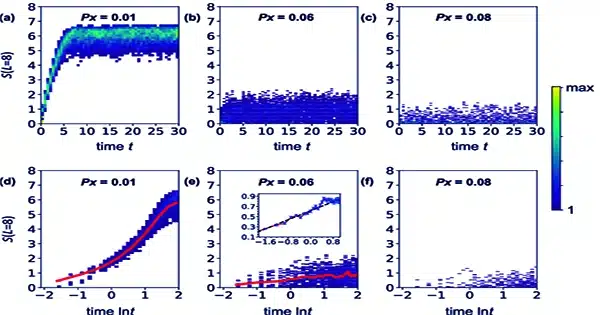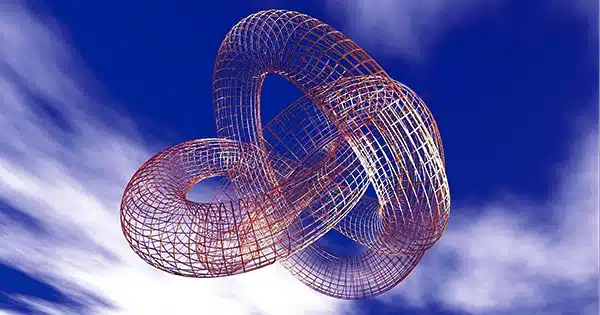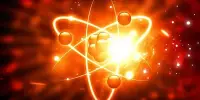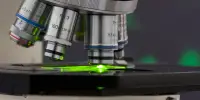Scientists from the United States and Taiwan have theoretically established the existence of a universal lower bound on topological entanglement entropy that is always non-negative in a new study. The findings were published in Physical Review Letters.
Quantum systems are strange and have their own set of rules, with quantum states revealing everything we know about the system. Topological entanglement entropy (TEE) is a statistic that provides insights into emergent non-local events and entanglement in topological quantum systems.
Given the importance of quantum entanglement in quantum computing and other information applications, knowing TEE is critical for understanding the behavior of quantum systems.
Information extraction from quantum systems: The entanglement entropies in quantum systems frequently follow an area law. This means that the area of the barrier that separates particles or regions is connected to their entanglement. TEE is a subset of entanglement entropy that gives additional information. It’s similar to a correction term that describes the system’s topological phase.

A topological phase is a distinct state of matter with unique topological features in condensed matter physics. TEE values identify these features, which are connected with the behavior of particles within the material, such as anyons.
“TEE is an enthralling substance. We can learn the number of species of anyons (emergent particles that are neither boson nor fermion) of the phase of matter by computing the entanglement entropy from a single ground state. It was released 18 years ago. I believe it inspired a lot of individuals. “The research area I work on might not exist without these early works,” Dr. Bowen Shi, the study’s lead author, told Phys.org.
TEE is assumed to have a universal value in many models that characterizes the features of the underlying topological phase. This, however, is not always the case. TEE may distinguish between two states connected by constant-depth circuits. These circuits are a type of quantum circuit operation that conducts a sequence of quantum gates or transformations in such a way that their depth, or the number of sequential operations, is limited.
The key assumption is that these circuits affect quantum states, and states linked by such circuits should be in the same phase because the operations do not significantly alter the underlying physics.
This isn’t always the case, and differences in TEE between such states are commonly referred to as spurious TEE.
“The first time I read the original TEE papers, I was in graduate school studying particle physics,” Dr. Shi says of TEE’s revolutionary influence. Now I research emergent particles, in which certain traits develop naturally with high degrees of freedom. My colleagues and I contended that we can now forecast the formation of anyons and the right TEE value using a single wave function and the entanglement area law.”
They essentially have a tool for understanding and forecasting the behavior of emergent particles as well as their entanglement properties.
Invariance of TEE and universal lower bound: The researchers wanted to know how trustworthy it was to extract universal features from a ground-state wave function. They focused on two-dimensional (2D) gapped ground states to investigate this.
These states exist in two-dimensional systems, such as thin films or two-dimensional materials, and are distinguished by an energy gap that separates the ground state from higher-energy excited states. This energy gap maintains the ground state’s stability and well-defined nature, making it a perfect platform for studying TEE.
They then used a constant-depth circuit to introduce noise into the gapped ground states. This noise is analogous to system perturbations or disturbances. The researchers wanted to see how the spurious TEE changed as the gapped ground state was disturbed. What they discovered was simply amazing.
“We discovered that the new state must extract a higher value of TEE than the noise-free state.” “In other words, the so-called spurious topological entanglement entropy is always positive,” Dr. Shi added.
This basically suggests that there is a non-negative universal lower bound on TEE. In basic terms, regardless of the perturbations created by the constant-depth circuit, the entanglement entropy within these 2D gapped ground states stays non-negative.
Dr. Shi compared this to a glass becoming lighter once the dust on its surface is removed. Wiping the dust off a glass does not make it heavier; rather, it shows its true weight. Similarly, adding noise does not reduce TEE but instead reveals an additional, non-negative TEE in the system.
Furthermore, the researchers discovered that TEE is invariant in constant-depth quantum circuits. This makes it a handy tool for analyzing the ground state’s underlying topological phase.
The path forward: “TEE computation is essential for identifying a material’s underlying phase,” Dr. Shi said of their research’s potential practical ramifications. Previous research found that TEE formula failure in noisy situations caused results to be ambiguous. Our lower bound eliminates half of the uncertainty, providing practical utility. With the growth of quantum computing and quantum state preparation, our discoveries may also be useful in these states.”
The discovery of a universal lower bound on TEE that is always non-negative highlights the entanglement measure’s durability even in the presence of perturbations generated by constant-depth circuits.
In this field, there are still unknown territories. The researchers have provided the groundwork for future research, such as looking into the generality of noise’s impact on spurious TEE, specifically the role of constant-depth circuits, and investigating TEE behavior at limited temperatures.
These unresolved questions bode well for future research in the field of quantum systems.















